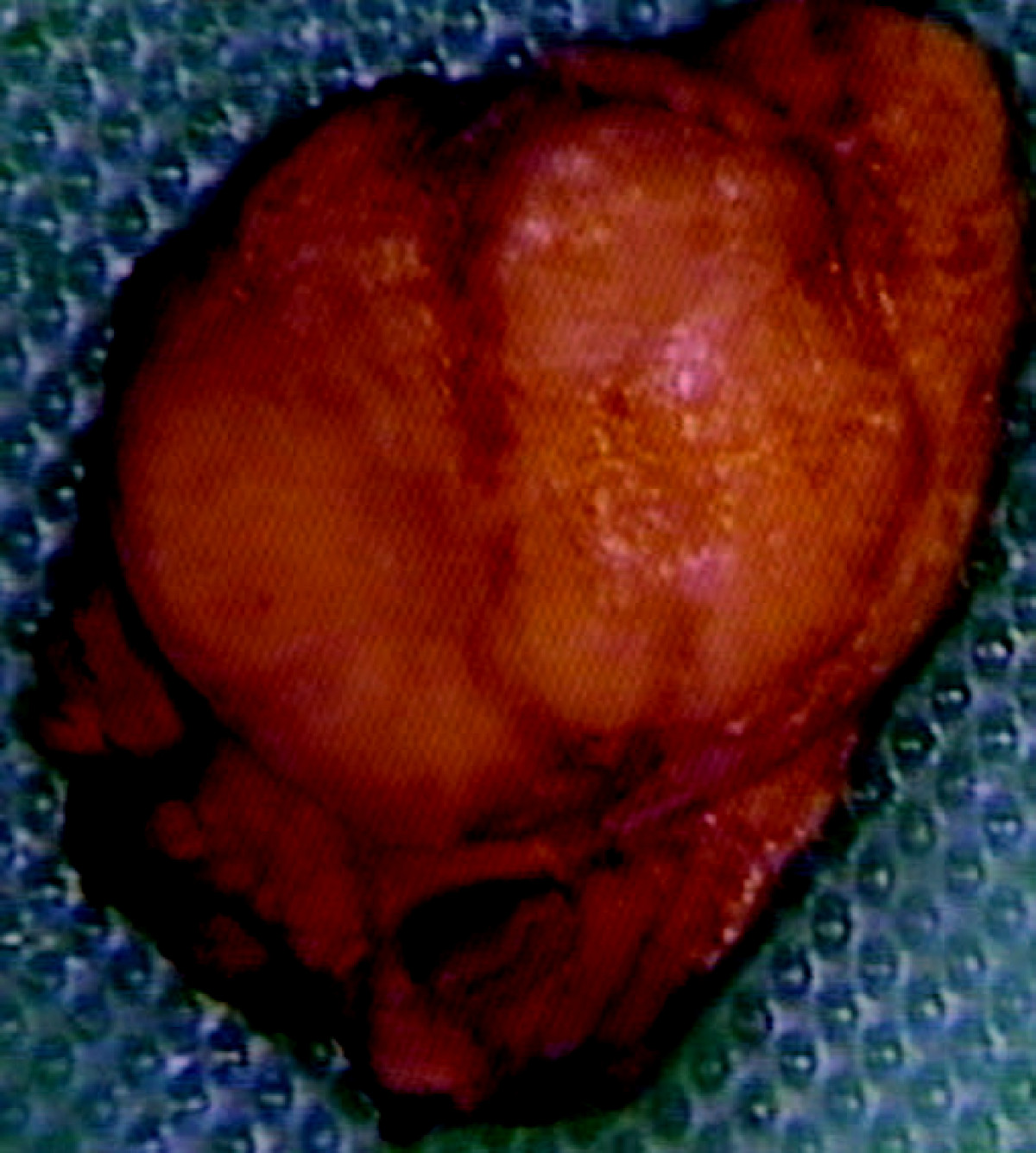Insulinoma pathophysiology
|
Insulinoma Microchapters |
|
Diagnosis |
|---|
|
Treatment |
|
Case Studies |
|
Insulinoma pathophysiology On the Web |
|
American Roentgen Ray Society Images of Insulinoma pathophysiology |
|
Risk calculators and risk factors for Insulinoma pathophysiology |
Editor-In-Chief: C. Michael Gibson, M.S., M.D. [1]Associate Editor(s)-in-Chief: Parminder Dhingra, M.D. [2] Amandeep Singh M.D.[3]
Overview
Insulinoma may occur as part of other genetic syndromes such as multiple endocrine neoplasia type 1 and von Hippel-Lindau syndrome. On microscopic histopathological analysis, solid or gyriform patterns, usually without glands are characteristic findings of insulinoma.
Pathophysiology
- An insulinoma is a tumor of the pancreas that is derived from beta cells and secretes insulin. It is a rare form of a neuroendocrine tumor. Most insulinomas are benign in that they grow exclusively at their origin within the pancreas, but a minority metastasize.
- Approximately 10% of insulinomas are multiple and 10% malignant.[1]
- Insulinomas are one of the functional pancreatic neuroendocrine tumors ("functional" because it increases production of insulin). Beta cells secrete insulin in response to increases in blood glucose. The resulting increase in insulin acts to lower blood glucose back to normal levels at which point further secretion of insulin is stopped. In contrast, the secretion of insulin by insulinomas is not properly regulated by glucose and the tumors will continue to secrete insulin causing glucose levels to fall further.
Genetics
- Insulinoma can occur in association with inherited syndromes, such as multiple endocrine neoplasia type 1, von Hippel-Lindau syndrome or sporadic.[2]
- Multiple endocrine neoplasia type 1 is an autosomal dominant disorder caused by alterations of the MEN1 gene located at chromosomal region 11q13.
Microscopic Pathology
On microscopic histopathological analysis characteristic findings of insulinoma are:
- Solid or gyriform patterns, usually without glands
Overview
- The exact pathogenesis of [disease name] is not fully understood.
OR
- It is thought that [disease name] is the result of / is mediated by / is produced by / is caused by either [hypothesis 1], [hypothesis 2], or [hypothesis 3].
- [Pathogen name] is usually transmitted via the [transmission route] route to the human host.
- Following transmission/ingestion, the [pathogen] uses the [entry site] to invade the [cell name] cell.
- [Disease or malignancy name] arises from [cell name]s, which are [cell type] cells that are normally involved in [function of cells].
- The progression to [disease name] usually involves the [molecular pathway].
- The pathophysiology of [disease/malignancy] depends on the histological subtype.
Pathophysiology
Pathogenesis
- Insulinoma is a rare benign pancreatic neuroendocrine tumor that arises from B islet cells, which are cells that are normally involved in the production of insulin. Few insulinomas can also produce other hormones such as Serotonin, gastrin, ACTH, glucagon, and somatostatin [3]
- They are usually small(90%), sporadic(90%), solitary(90%) and benign(90%) tumors. Those associated with the MEN1 syndrome are usually malignant and higher recurrence rate(21% at 10 and 20 years) than in those without MEN I (5% at 10 and 7% at 20 years). [4]. Although there is a case report of a large(9cm), pedunculated and weighing more than 100g.[5]
- Almost all insulinomas are present throughout the pancreas and extrapancreatic ones causing hypoglycemia are rare(<2%)[6]
- It is thought that insulinoma is mediated by mTOR/P70S6K signaling pathway.Inhibitors of mTOR(rapamycin) or dual PI3K/mTOR(NVP-BEZ2235) thus will be new drugs for treating insulinoma. The pathway will give more possibilities for medical treatment.[7]
- The progression to [disease name] usually involves the [molecular pathway].
- The pathophysiology of [disease/malignancy] depends on the histological subtype.
Genetics
- [Disease name] is transmitted in [mode of genetic transmission] pattern.
- Genes involved in the pathogenesis of [disease name] include [gene1], [gene2], and [gene3].
- The development of [disease name] is the result of multiple genetic mutations.
Associated Conditions
- Other pancreatic neuroendocrine tumors
- MEN 1[4]
- von Hippel-Lindau
- Neurofibromatosis type 1
Gross Pathology
- On gross pathology insulinomas have a red brown appearance, are usually solitary, can be present anywhere in the pancreas(extrapancreatic are very rare).

Microscopic Pathology
- On microscopic histopathological analysis, [feature1], [feature2], and [feature3] are characteristic findings of [disease name].
-
Histopathology of pancreatic endocrine tumor (insulinoma). H&E stain[8]
-
Histopathology of pancreatic endocrine tumor (insulinoma)[8]
-
Histopathology of pancreatic endocrine tumor (insulinoma). Chromogranin A immunostain[8]
-
Histopathology of pancreatic endocrine tumor (insulinoma). Insulin immunostain[8]
References
- ↑ Insulinoma. Dr Yuranga Weerakkody and Dr Frank Gaillard et al. Radiopaedia 2015. http://radiopaedia.org/articles/insulinoma
- ↑ Murray PD, McKenzie DT, Swain SL, Kagnoff MF (1987). "Interleukin 5 and interleukin 4 produced by Peyer's patch T cells selectively enhance immunoglobulin A expression". J Immunol. 139 (8): 2669–74. PMID 3498768.
- ↑ AlJadir, Saadi (2015). "Insulinoma: Literature's Review (Part 1)". Endocrinology&Metabolism International Journal. 2 (3). doi:10.15406/emij.2015.02.00025. ISSN 2473-0815.
- ↑ 4.0 4.1 Service FJ, McMahon MM, O'Brien PC, Ballard DJ (1991). "Functioning insulinoma--incidence, recurrence, and long-term survival of patients: a 60-year study". Mayo Clin Proc. 66 (7): 711–9. PMID 1677058.
- ↑ Mittendorf EA, Liu YC, McHenry CR (2005). "Giant insulinoma: case report and review of the literature". J Clin Endocrinol Metab. 90 (1): 575–80. doi:10.1210/jc.2004-0825. PMID 15522939.
- ↑ Okabayashi T, Shima Y, Sumiyoshi T, Kozuki A, Ito S, Ogawa Y, Kobayashi M, Hanazaki K (2013). "Diagnosis and management of insulinoma". World J. Gastroenterol. 19 (6): 829–37. doi:10.3748/wjg.v19.i6.829. PMC 3574879. PMID 23430217.
- ↑ Zhan HX, Cong L, Zhao YP, Zhang TP, Chen G, Zhou L; et al. (2012). "Activated mTOR/P70S6K signaling pathway is involved in insulinoma tumorigenesis". J Surg Oncol. 106 (8): 972–80. doi:10.1002/jso.23176. PMID 22711648.
- ↑ 8.0 8.1 8.2 8.3 Neuroendocrine tumour of the pancreas. Libre Pathology. http://librepathology.org/wiki/index.php/Neuroendocrine_tumour_of_the_pancreas
![Histopathology of pancreatic endocrine tumor (insulinoma). H&E stain[8]](/images/2/2d/Pancreatic_insulinoma_Histology_1.JPG)
![Histopathology of pancreatic endocrine tumor (insulinoma)[8]](/images/2/2f/Pancreatic_insulinoma_histology_2.JPG)
![Histopathology of pancreatic endocrine tumor (insulinoma). Chromogranin A immunostain[8]](/images/a/a3/Pancreatic_insulinoma_histopathology_3.JPG)
![Histopathology of pancreatic endocrine tumor (insulinoma). Insulin immunostain[8]](/images/d/d5/Pancreatic_insulinoma_histology_4.JPG)